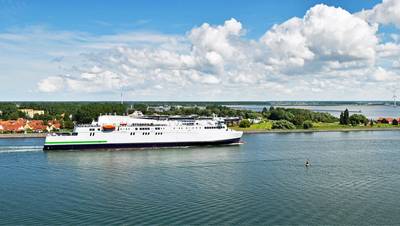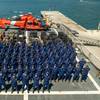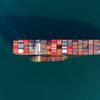Interferry Calls for CII Fleet-Balancing Mechanism
Interferry Director of Regulatory Affairs Johan Roos has announced that the organization has drafted an alternative compliance mechanism to the CII that will be submitted to MEPC 82, to be held September 30 - October 4.
CII is a shipping industry-specific operational efficiency requirement that dictates how much fuel is allowed to be burned per nautical mile in relation to ship type and ship size. “It follows the same illogical statistical approach as IMO’s Energy Efficiency Design Index (EEDI) for new ships and the Energy Efficiency Existing Ship Index (EEXI),” says Roos.
“When analyzing the CII performance for ro-ro passenger and ro-ro cargo ships, it is clear that the route on which the ship operates has a major impact on its CII performance. Shorter routes are typically characterized by a high number of port calls. Each port call implements a higher consumption per nautical mile on account of the ship’s acceleration and maneuvering. Routes and operations that require prolonged port visits to meet e.g. customer demand will fare worse on account of fuel being consumed while alongside.
“We have done our utmost to find ways to compensate for these route-specific handicaps but in vain. For any improvement made for a disadvantaged group, another group of ships ends up being penalized.”
Roos says the only realistic way to improve from E rating is to move the penalized ship to a more ‘CII-friendly’ route. Yet, ropax ferries are often purpose-built for the routes they service, making ship swaps challenging. Route changes don’t necessarily reduce an operator’s overall greenhouse gas (GHG) output, and switching to low-carbon fuels to improve CII performance is not cheap with owners understandably preferring to implement new technologies in new ships rather than retrofitting existing tonnage.
Instead of shifting fleets around to optimize CII or make sub-optimal investments in existing ships, Interferry proposes a fleet-balancing mechanism involving the ‘balance trading’ of emissions from ships with attained CII values lower than required by regulation 28 of MARPOL Annex VI with ships in the same fleet with attained CII values higher than those required by regulation.
“Fleet-balancing is nothing new as it is a well-established compliance tool in a wide range of sectors. In both the EU and the US, for instance, the emissions standards for passenger cars and light trucks include fleet averaging and pooling compliance provisions. In maritime, a fleet pooling system was recently introduced under the FuelEU Maritime Regulation, entering into force on January 1, 2025. The IMO has a similar concept under consideration as part of the development of the Global Fuel Standard.
“When implementing a Fleet-Balancing mechanism, companies can choose to achieve performance across a group of ships (in their fleet). It is also in the spirit of the CII framework and the uptake of new fuels and technologies, promoting improvements for ships of any rating, not just D and E as is the case today.”
The monitoring and reporting of data for the calculation of attained annual operational CII would follow the same procedures as the individual ship monitoring and reporting mechanism. The only difference with fleet-balancing is that each ship needs to have a balance sheet to record the values of emissions balanced against any other ships in the fleet together with the necessary SEEMP Part II documentation.















